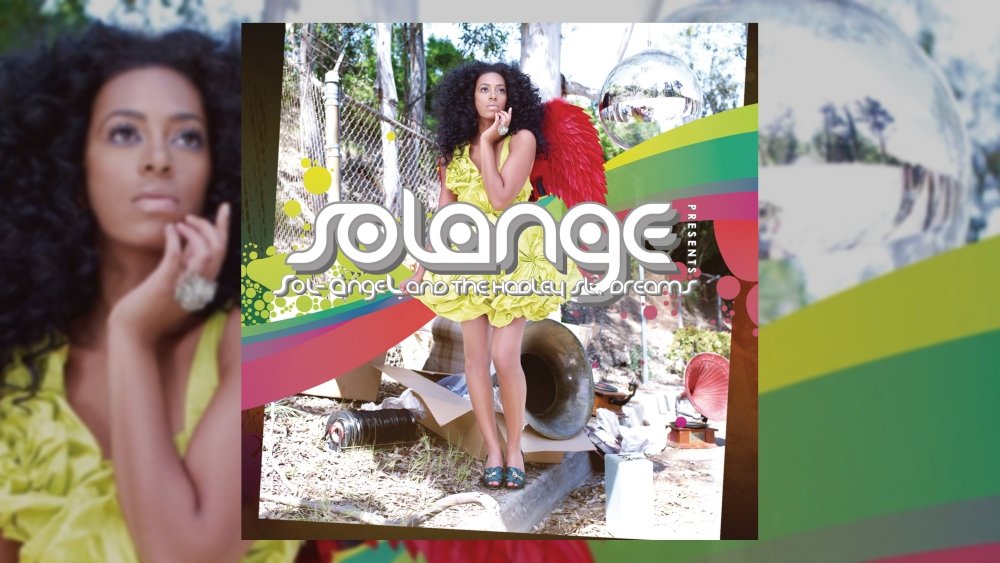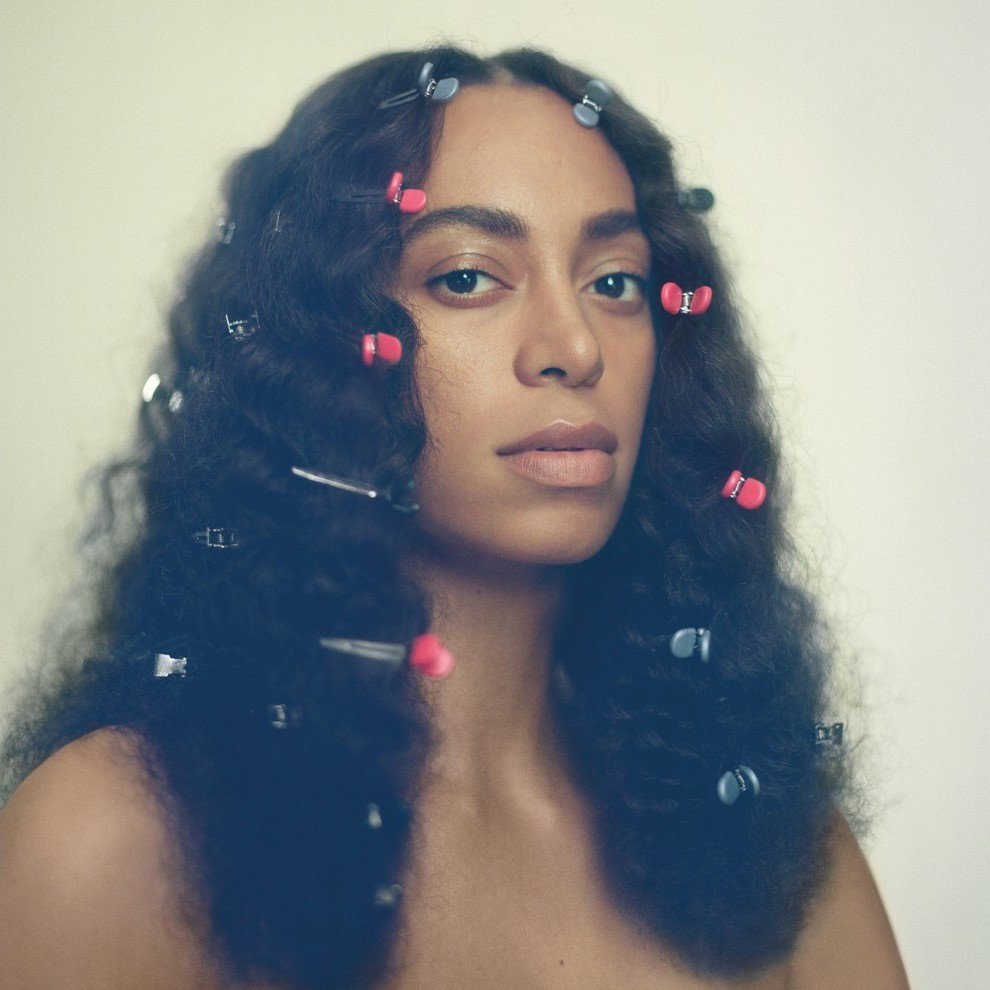Happy 15th Anniversary to Solange’s second studio album Sol-Angel and The Hadley St. Dreams, originally released August 26, 2008.
In December 2002, Solange Knowles, Beyoncé’s younger sister, released her debut album Solo Star on the Columbia/Music World label. After several years of operating at the periphery of her sister’s success, Solange was finally ready to step into the spotlight on her own.
An “industry ready record,” Knowles allied herself with a crop of cutting-edge talent such as The Neptunes, Jermaine Dupri, Timbaland and Linda Perry to name a few. But, in addition to the material solicited from this cast of soundsmiths, Knowles herself co-produced and co-wrote several of the album’s sides. Despite that fact, her family name and Solange’s own vocal charm, the mainstream friendly Solo Star underperformed.
Soon after in 2003, Solange’s whirlwind courtship with Daniel Smith—her first husband—took her to Moscow, Idaho where Smith was enrolled in school. There, the two young adults worked earnestly at their relationship and co-parented their young son.
These events—personal and professional—became a flashpoint for Solange and actualized her confidence in her own artistic potential. She began to write quickly, scripting her experiences and making sure they’d serve as the impetus for a follow-up to Solo Star—except this time she wouldn’t censor herself for the sake of commerce.
In the lead-up to Solange inking a deal with Geffen Records, she divorced Smith and took her son back to Houston, Texas in 2005. Once settled, Solange spent the next two years banging away at the shape of what was to be her sophomore set Sol-Angel and The Hadley St. Dreams. The album moniker was a clever play on her name and a street in Houston associated with Solange’s childhood.
For the second time around, Solange was present in the writing of every track on Sol-Angel and The Hadley St. Dreams. And while collaboration was central to the construction of the project versus “blanket assignment” duties, Solange led in every quarter of the creative process as she was telling her story. The guest list for the proceedings was first-rate; the roster included Q-Tip, Lamont Dozier, Jack Splash, Pharrell Williams, Bilal, Mark Ronson, Soulshock & Karlin and Marsha Ambrosius. This was just a sampling of the talent onboarded for Solange’s song cycle.
Watch the Official Videos:
The co-writers and co-producers assembled kept Solange focused on her goal of bringing her own eclectic sonic tastes vibrantly onto the wax. One of Solange’s primary influences—the Motown girl group archetype (The Supremes, Martha Reeves and The Vandellas)—makes itself known on cuts like “I Decided, Part 1,” “Dancing in the Dark” and “Would’ve Been the One.” Solange recreated the energy and panache of this beloved black pop print in a contemporary context with ease—she had clearly done her homework.
Further melodic and groovy glory awaited listeners elsewhere on the light funk jam of “I Told You So” and the uptempo soul psychedelia on “Sandcastle Disco.” The latter track’s infectious percussive riff was tastefully borrowed from “Mary Mary,” a tuneful ditty from one of the preeminent pop powerhouses of the 1960s, The Monkees.
At the record’s end, Solange musically partakes in the ambient electro-R&B sub-genre with the song pieces “Cosmic Journey” and “This Bird.” On a variety of expanded editions, Solange continued on in this aural vein with the equally potent bonus tracks of “White Picket Dreams” and “ChampagneChroniKnightcap.”
Setting aside the songwriting esoterica of “Cosmic Journey” and “ChampagneChroniKnightcap,” “This Bird” and “White Picket Dreams” orbited a decidedly autobiographical air. This same confessional vibe charged the lyrical atmosphere of the preceding entries “God Given Name,” “T.O.N.Y.” and “Valentine’s Day” too. On these cuts, Solange deftly (and movingly) touched on her marriage, divorce, motherhood, and black social concerns—in short, it was an album that reflected the totality of her experiences and interests.
Released in late August 2008, Sol-Angel and The Hadley St. Dreams garnered nearly universal acclaim. Three singles jumped off of Solange’s sophomore strike of genius: “I Decided, Part 1,” “Sandcastle Disco” and “T.O.N.Y.”—like their parent effort, they met with positive critical reception, but commercially couldn’t get a foothold. With the modern black music realm in a state of constant flux at the tail end of the 2000s, Solange’s ability to straddle the conventional and the avant-garde was difficult for Geffen Records to market.
Enjoying this article? Click/tap on the album covers to explore more about Solange:
In the decade after Sol-Angel and The Hadley St. Dreams, the singer-songwriter-producer kept busy on a variety of fronts. However, music stayed at Solange’s creative core. A post-modern synth soul extended play entitled True appeared in 2012; fans and critics raved.
Four years later, the proper junior follow-up to Sol-Angel and The Hadley St. Dreams manifested itself in A Seat at the Table (2016). The modern-day masterpiece—which was followed by 2019’s When I Get Home—was timely, its expression of American black womanhood via a mélange of vintage and current R&B that had its roots in significant portions of Sol-Angel and The Hadley St. Dreams. It’s clear that Solange’s second act was ahead of its time as much as it was out of step with the era of its release; it also stood as a colorful portent to the singer’s seemingly limitless vision as a recording artist who wasn’t content to be known primarily as Beyoncé’s kid sister.
LISTEN:
Editor's note: this anniversary tribute was originally published in 2018 and has since been edited for accuracy and timeliness.



